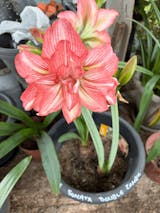
Learn How To Use Magnificent Mulch In Your Garden
There are very few things that get a seasoned gardener’s goat like bare patches of soil. And for good reason. An unmulched garden is not environmentally friendly, so we spend our time making sure not a single speck of bare soil is to be found. Because yes, mulching has significant environmental benefits, like preventing erosion and sediment runoff. Topsoil erosion is becoming a big problem worldwide, so you can do your bit to stop it in its tracks in your own backyard. Did you know that bare soil can lose up to five times as much sediment as that covered in mulch? And that the roots of any plants planted in it will suffer and require more water?
Apart from that, an unmulched garden will in all likelihood end up suffering from compacted soil, due to repeated watering, weather-related evaporation, and beings walking on the soil. Rain will compact bare soil, the sun then bakes it, and the result is not the best environment for plants. But frankly, you don’t want all your soil running off elsewhere in rainstorms.
What is Mulch?
Simply put, it is any material laid over the surface of soil, an essential element for healthy soil growth, which plays a large role in creating sustainable ecosystems. Just think about walking through a forest, and seeing all the leaves and detritus on the forest floor. It’s rare you’ll find a bare patch. And all that goodness is going back into the soil.
Many organic mulches will have great appeal for earthworms, which will burrow through your soil, adding aeration to it, in their haste to get something yum to ingest.
What exactly does it do?
Well, apart from improving the soil’s structure and drainage, while upping the nutrient holding capacity as they decompose, there are many reasons to utilise it. If like many a low-maintenance gardener, you hate weeding, mulch will suppress weeds, making your life easier. It is a temperature regulator so it will shield your plants from getting too hot in the sun and protect your plants from frost. Mulch helps retain moisture in the soil, especially during really hot weather, preventing too much evaporation while keeping the soil cooler. It also means you don’t have to water as often.
Types of mulch
The best type of mulch for your garden is compost (see compost blog here). Using compost as mulch will give your beautiful varieties many nutrients they need and will improve the structure of the soil. Compost is definitely the top pick when it comes to mulch for your garden.
However, if you are looking for a more aesthetically pleasing look, there are many types to choose from. Pine straw, rooibos bark or shredded hardwood bark, thick layers of compost, nut hulls, seaweed, leaf compost and inorganic mulches such as pebbles can complement or add interest to the garden.
You could choose a coloured mulch that matches the colours of your home, be it the brickwork or painted walls. For instance, if you live in a face brick home, a brownish-red pine mulch would work seamlessly. A dark mulch will contrast with light foliaged or flowering plants, highlighting them and enhancing your landscape theme.
Things to bear in mind when mulching are:
When re-mulching a bed that has already been added to a few times, remove some of the old mulch that hasn’t broken down.
You don’t need to lay plastic or geotextiles (weedguard or other landscaping fabrics) down before mulching. This may actually lead to more water runoff, and your organic mulches which break down need to be in contact with soil to be able to improve it. Apart from that, it doesn’t look all that good when the fabric or plastic gets exposed.
Don’t mulch right up to the bark on trees. If it’s piled up against the tree, it could lead to the bark rotting. So no volcanos please - the temperature may just get too hot for the tree to handle.
Where to use mulch
Remember that compost is still the best mulch to use for all varieties. Use bark chips around trees, straw for vegetable beds and strawberry patches and pine needles, rooibos mulch (if you like the idea of loads of red in the garden) or shredded leaves for ornamental flowers and shrubs.
At the edge of a path, bed or pavement, taper the mulch down to a thinner layer.
When using grass clippings, don’t make the layer too thick (2-3cm is about as much as you should go). Wet grass clippings can mat down, which reduces oxygen and moistures ability to get into the soil.
Even the ‘waste’ in your garden can be kept out of the rubbish bin. Use leaves that have been turned into leaf mould in a plastic bag during the year to blanket your beds in winter. Or simply leave the leaves where they fall, or rake them into the beds when you’re doing a tidy up.
Don’t use bad mulch!
Get it from a reliable source to avoid having an added problem of weeds suddenly sprouting up everywhere.
If you’re using pebbles, gravel or other inorganics, they can retain heat, and not be all that great at providing water retention in the soil. They also elevate soil pH, so don’t use around acidic soil loving plants like Hippeastrum.
When is too much mulch too much?
Most recommendations are to place between 5 – 10cm of mulch in your beds, twice a year, unless you’re using an inorganic or pea gravel mulch, then you would only put up to about 5cm. (Obviously if you have loads of low-growing plants and flowers, you’d adjust for that so that they’re not buried!) Too much can trap excess moisture which could lead to root rot and other diseases. Too little allows sunlight and wind to penetrate, which will dry the soil and encourage weed growth.


Leave a comment